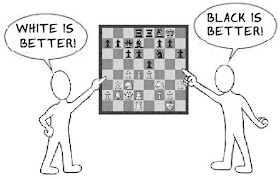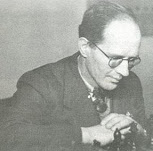Zeppelins were a type of rigid airship named after the German inventor Count Ferdinand von Zeppelin who pioneered rigid airship development at the beginning of the 20th century. His ideas were first formulated in 1874 and developed in detail in 1893. They were patented in Germany in 1895 and in the United States in 1899.
Zeppelins were first flown commercially in 1910 by Deutsche Luftschiffahrts-AG, the world's first commercial airline. During World War I, the German military made extensive use of Zeppelins as bombers and scouts, resulting in over 500 deaths in bombing raids in Britain.
The defeat of Germany in 1918 lead to the airships being surrendered under the terms of the Treaty of Versailles, which also prohibited Germany from building large airships. An exception was made allowing the construction of one airship for the United States Navy. In 1926, the restrictions on airship construction were lifted.
In January 1913 Admiral von Tirpitz, Secretary of State of the German Imperial Navy, got Kaiser Wilhelm II to agree to a five-year expansion program of German naval airship strength. One requirement was that the craft should be capable of bombing England.
On October 17, 1913, LZ-18 (Length: 518 ft. 2 in., Diameter: 54 ft. 6 in.), was removed from its hanger for a test flight, but one of the engines would not start. The delay of two hours while the engine was repaired allowed the morning sun to heat the hydrogen, causing it to expand. This caused the airship to ascend rapidly to 2,000 feet.
At 2,000 feet horrified observers on the ground saw a flame leap out of the forward engine which caused an explosion of some of the gas bags. Halfway to the ground there was a second explosion and as the wreckage hit the ground further explosions followed as the fuel tanks ignited.
The accident was determined to have been caused by the rapid ascent leading to venting of hydrogen through the relief valves and some of the vented gas was then sucked into the engine where it ignited, the fire then spreading to the gas bags.
Three survivors were pulled from the blazing wreckage, but two died shortly afterwards and the third died that night in hospital. In all 28 men died, including the new chief of the Admiralty Aviation Department, Korvettenkapitan Behnisch. As a Naval officer Behnisch was known to be very efficient and he was destined to become a leading officer in naval affairs.
The loss of Behisch's craft occurred six weeks after the loss of another Zeppelin along with most of its crew. The two disasters deprived the German Navy of most of its experienced personnel and led to the suspension of the planned expansion program.
Max Victor Behnisch (1873 - October 4, 1913) was a decent chess player. At that time, world champion Emanuel Lasker was constantly on the move playing in tournaments and giving simultaneous displays.
Behnisch was one of the strongest members of the Berlin Chess Club and though not of master rank, he was highly respected and considered to be "an exceedingly clever amateur." He never reached the top ranks because he rarely had the chance to compete in important tournaments.
In 1902, Behnisch defeated Pillsbury in a 12-player blindfold simultaneous display and in 1912, he was a participant in the B tournament in Breslau. After the conclusion of the Breslau tournament, Breslau organizers put together a quadrangular tournament; the results were: 1)Suechting, 2) von Holzhausen, 4) Behnisch and 4) Hartlaub.
Behnisch had the distinction of having been the only player within the past year who had been able to defeat Lasker in any of his exhibition games. In defending with the Center Counter Gambit, as the Scandinavian was called back then, Behnisch managed to obtain good development and excellent attacking possibilities. His attack gained momentum until Lasker was forced to resign after 31 moves.
Emanuel Lasker - Max V. Behnisch
Result: 0-1
Site: Simultaneous, Berlin
Date: 1912.11.17
Center Counter Gambit
[...] 1.e4 d5 Today this is known as the Scandinavian Defense. It's the oldest opening by black recorded in modern chess. The idea of the defense is to prevent white from controlling the cente with pawns and thereby forcing an open game, while allowing black to build a strong P-structure. 2.exd5 The Main Line. Black has two major continuations: 2... Qxd5 and 2...Nf6 which is the modern way. The rare Blackburne-Kloosterboer Gambit (2...c6) is thought to be unsound and is almost never seen. 2...♘f6 The idea is to delay capturing the P on d5 for another move, avoiding the loss of time that Black incurs in the ...Qxd5 lines after 3.Nc3. Now white has several possibilities. 3.c4 The modern way is 3.d4, but Lasker's move is not bad. 3...c6 4.dxc6 Modern theory frowns on this move, preferring 4.Nc3 or 4.d4 4...♘xc6 5.♘c3
5.♘f3 e5 6.d3 e4 7.dxe4 ♕xd1+ 8.♔xd1 ♘xe4 9.♗e3 Black is slightly better. Chandler,M (2585)-Adams,M (2505)/Hastings 1989
5...e5 6.d3 White is behind in development and is having a bit of a problem finding active play for his pieces. 6...♗c5 7.♗e3 ♘d4 8.♘f3 ♘g4 Solid would have been 8...O-O followed by ...Bf5, but the text, while it gives white the advantage, is tricky and worth a try in a simul. 9.♗xd4 exd4 10.♘e4 ♗b4+ 11.♘fd2 White has a cramped position, but now his one real weakness, the P on e3, is no longer exposed. (11.♘ed2!?11...O-O 12.a3±) 11...O-O 12.♗e2 One might expect the N to meekly retreat fo f6 after which white has a solid, if cramped, position...plus he is a P up. 12...♘e3 13.fxe3 dxe3 14.O-O exd2 15.♘xd2 For the moment white is two Ps up, but black has a strong initiative. 15...♕d4+ 16.♔h1 ♕xb2 17.♘e4 ♕d4 18.♖b1 a5 AT this point white is only a P ahead, but his position remains cramped so the chances are about equal. 19.♖f4 A simple tactical error.
19.♕c1 was his best chance of getting any play. 19...♖a6 20.a3 ♗e7 21.♕c3 ♕xc3 22.♘xc3 ♗xa3 23.d4 Black still has better chances, but at least by returning th eP white has gotten some activity for his pieces.
19...f5 The R is undefended so the N can't move. 20.♕b3
20.c5 was worth a try. 20...fxe4 Correct is 20...Bxc5, but if black carelessly plays this white is right back in the game after 21.♕b3+ and black has to return the piece with. .. 21...♗e6 22.♕xe6+ ♔h8 23.♖xf8+ ♖xf8 24.♖f1 with equal chances.
20...♗e6
20...♕e5 keeps an even firmer grip 21.♖bf1 fxe4 22.♖xf8+ ♗xf8 with a winning advantage.
21.♘g5 (21.a3 doesn't improve anything 21...♗d6 22.♘xd6 ♕xf4) 21...♕xf4 22.♘xe6 ♕e5 Here the correct move was 22...Qe3 with a decisive advantage. This move should have allowed Lasker to all but equalize; instead, he blunders. 23.♘xf8 Losing quickly.
23.♗f3 Saves the game. After 23...♖fe8 24.d4 ♕f6 25.♗xb7 Black has a slight advantage. From this position Shootouts resulted in white scoring +0 -1 =4, so he has good drawing chances.
23...♕xe2 Alertly played! (23...♗xf8 allows white to equalize after 24.♗f3 ♖e8 25.g3)
23...♖xf8 is easily refuted 24.♗f3 ♔h8 (24...b6 25.c5+ wins after 25...♔h8 26.cxb6) 25.♗xb7 ♖e8 and black's advantage is minimal.
24.♘d7 ♗e1 24...Rd8 was also a hard lick. 25.c5+ ♔h8 26.h3 ♕f1+
26...f4 also wins after 27.d4 ♕f1+ 28.♔h2 ♗g3+ 29.♕xg3 fxg3+ 30.♔xg3 ♕xb1
27.♔h2 f4 28.♖xe1 ♕xe1 29.d4 ♕g3+ This finishes him off. 30.♕xg3 fxg3+ 31.♔xg3 ♖d8 Lasker resigned. Powered by Aquarium








